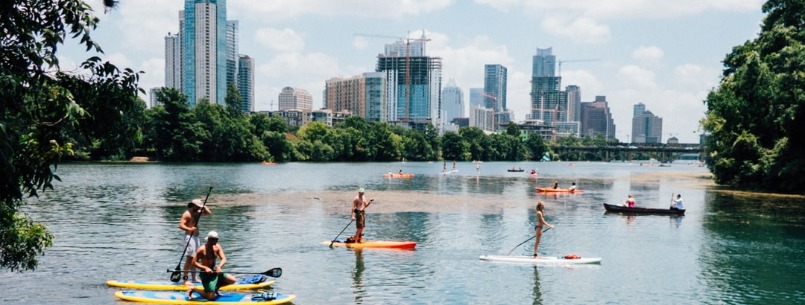Austin Outdoor Activities
The Texas capital is undeniably the most creative of the state’s cities—and easily one of the best places to mountain bike, hike, swim, climb, fish, and channel your inner Lance Armstrong. Here we break down the top ten adventures awaiting you.
Known as a city within a park, it’s little wonder that Austin, Texas, enjoys a reputation as one of America’s fittest cities. Regardless of where the mercury rests, travelers will find year-round opportunities to flex their muscles in and around the state’s red-hot capital. Here, we profile our ten favorites.
10. Hiking and Camping at Pedernales Falls State Park
The surreal-looking limestone slide that gives this 5,200-acre state park 35 miles west of Austin its name is worth the drive alone. With dozens of miles of trails—including a sturdy climb along the flanks of Wolf Mountain—riverside beaches, swimming holes, and boating access, there are plenty of places to explore besides the popular falls. (Be forewarned that flash flooding can occur on the riverbed, so keep an eye out for rising water and check the weather report.)
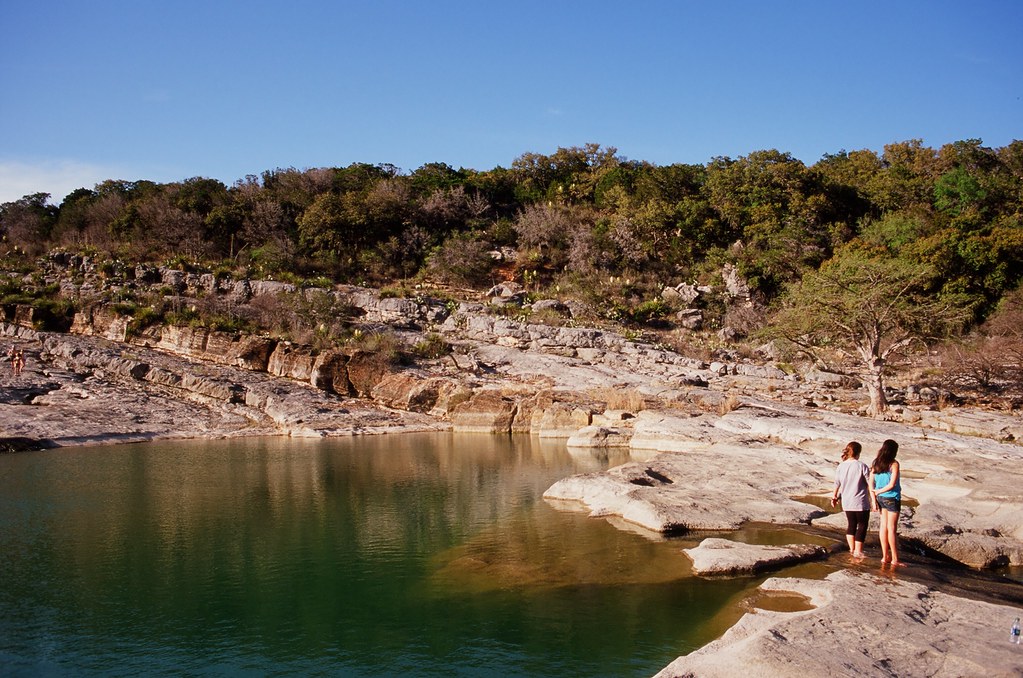
Wildlife watching is another popular draw, with coyotes, armadillos, and more than 150 species of birds in residence. But it’s the 300-million-year-old geological formations and the famously picturesque falls that promise to entrance time and again. $5 per person day use; $3 per person for an overnight stay, plus $10 to $20 per campsite. (830.868.7304)
9. Mountain Biking at Rocky Hill Ranch
Located amid the Lost Pines of Texas about 40 miles east of Austin, this private mountain bike ranch is a longtime favorite of riders looking for a mini-vacation or change of scenery. A system of winding loops cuts through the forest, alternating swooping singletrack and a series of climbs that will make your thighs beg for mercy.

For those who are not up for the full course, there are convenient bailouts across the property, so whether it’s a ride of six miles or 26, you can set your own pace; although novices will want to keep their eyes out for the well-marked, technical descents. Be sure to carry plenty of water, tools, and a patch kit. With new management on board, some of these logistics have yet to be worked out. After the ride, stop by the saloon (great burgers, free music on Fridays). $8 per rider, per day. (512.718.8822)
8. Birdwatching in Hornsby Bend
Central Texas is a flyway for all manner of feathered friends, and Austin is known for its varied and diverse migratory species. So while a sewage treatment plant might seem a strange place to stake out for birds, no birder will want to bypass the Hornsby Bend Biosolids Management Plant. These settling ponds offer a chance to see more than 370 potential species—an experienced birder might spot 50 in a four-hour stretch—including waterfowl and shorebirds, songbirds, woodpeckers, and raptors, as well as other wildlife.
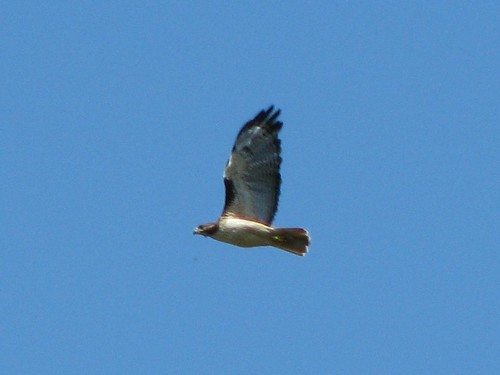
A scenic 3.5-mile path along the Colorado River offers prime viewing for osprey, bald eagles, and the like. A free bird survey takes place on the second Saturday of every month. The Center for Environmental Research at Hornsby Bend is nine miles east of Austin on FM 973 off Highway 71.
7. Fly-Fishing on the Guadalupe
Halfway between San Antonio and Austin, the Guadalupe River below Canyon Dam is the southernmost trout fishery in the State. The cold-water fish have been stocked in the river since the 1960s, creating a small but trenchant, permanent population of hard-fighting rainbow (and the occasional brown) trout. For year-round angling, it’s best to stick with the public access spots just below the tailrace, where the water stays cold, rarely reaching above 65 degrees. Downstream, you’ll find riffle runs of overexposed limestone alternating with deep, murky pools where the big fish lay in wait.
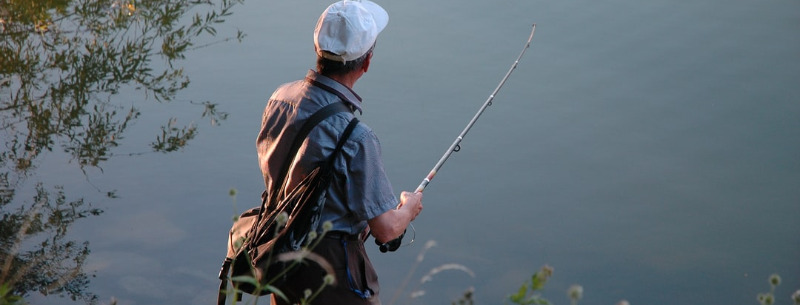
Between December and April, Texas Parks and Wildlife works with Trout Unlimited to stock upwards of 15,000 hatchery-raised rainbows each year. A freshwater fishing license is required; available at most area tackle shops. Get advice or arrange a guide through New Braunfels’s Gruene Outfitters (830.625.4440).
6. Paddling the San Marcos
When most Texas rivers dry out, the San Marcos, about 45 miles from Austin, keeps on flowing, offering trips of up to 20 miles with options for shorter floats. Sights include epic pools of cool green water beneath ancient cypress branches, a smattering of Class II rapids, and a variety of wildlife, including armadillos, herons, kingfishers—and co-eds from nearby Texas State University.
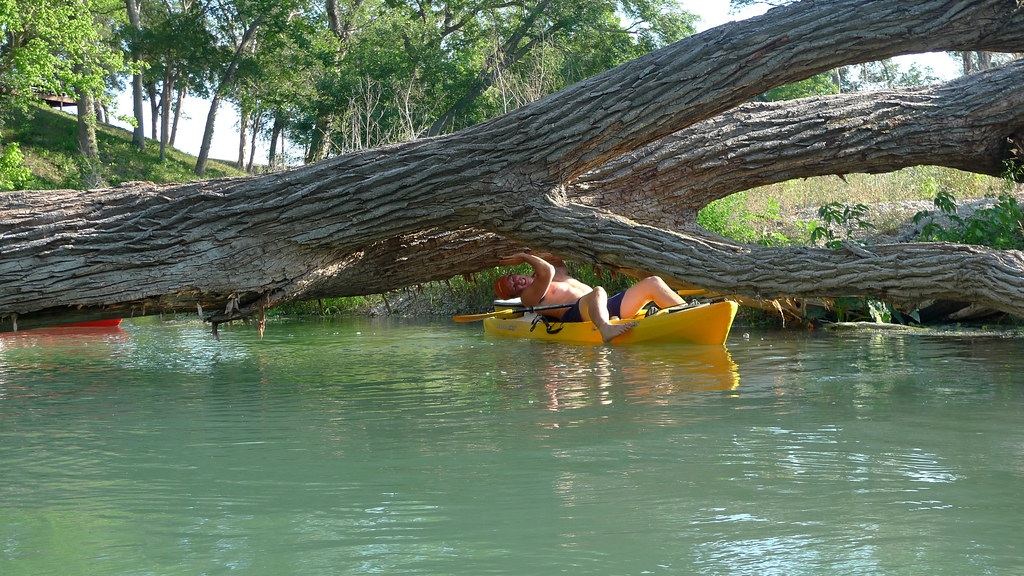
Whether in a canoe or kayak, you can cast a line for largemouth and smallmouth bass, as well as feisty sunfish. Obstacles include logjams and some small dams that may have to be portaged. But for the most part, unless there have been regular rains, floating San Marcos tends to be pretty stress-free. Shuttles and rental boats can be arranged by T.G. Canoe Livery (512.353.3946) or Spencer Canoes (512.357.6113), which also runs the Shadow Grove Campground downstream.
5. Rock Climbing at Reimers Ranch
Once upon a time, Reimers Ranch was an open secret; a private ranch with river access for fishermen and some of the best climbing in central Texas. In 2006, voters approved funding that allowed Travis County to buy 2,427 acres, securing this recreation area for generations to come. Climbers still flock to the 300-plus world-class routes that have been established in the park, mostly along a series of exposed limestone cliffs with many climbs rated 5.9 and above. 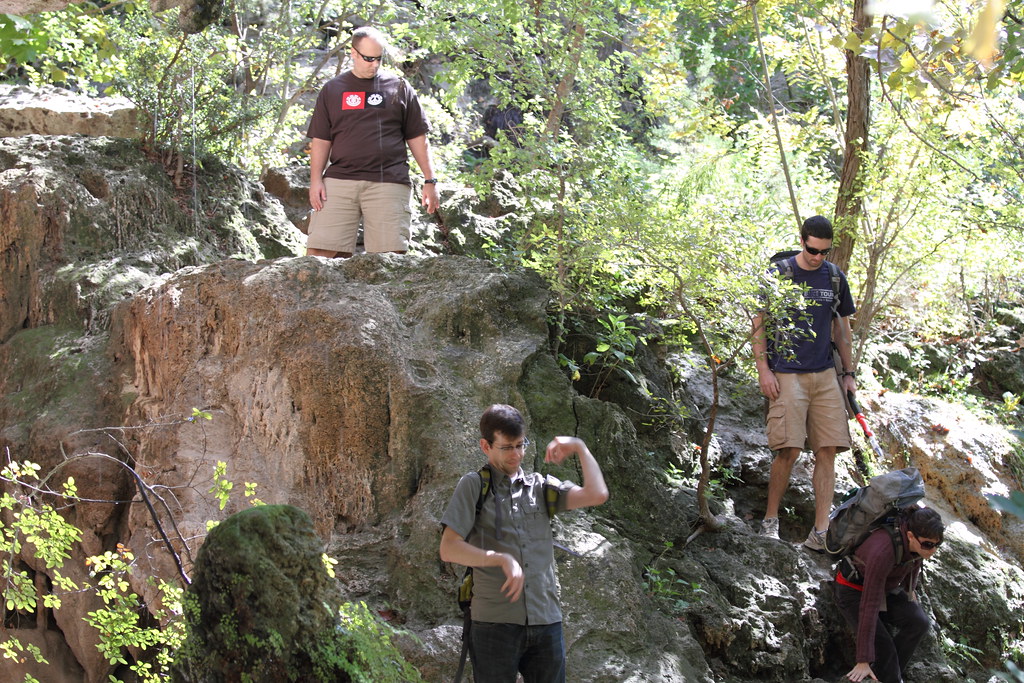
Reimers Ranch Rock Climbing by ksbuehlerTest yourself on the Crankenstein Wall or House of Pain Buttress. In recent years, mountain bikers have also overseen the creation of 18 miles of intermediate trails, while the spring white bass spawning runs on the nearby Pedernales River make this park a major draw for anglers as well. Day-use only; $10 per vehicle. (512.854.7275)
4. Road Cycling Through the Texas Hill Country
From ten-milers to centuries, you can chase Lance’s shadow from the soon-to-be-completed Lance Armstrong Downtown Bikeway, or explore touring routes that will take you to any number of towns outlying Austin. Depending on your fitness level, one great exercise route is the hilly 45-mile Dam Loop, heading due west from Austin, connecting Highway 360 to Highway 620 (any local bike shop can give detailed directions).

The town of Fredericksburg, about 80 miles southwest of Austin, has been actively promoting other regional cycling routes. Hardcore racers will want to check out the Tuesday Nighter, an unofficial throw-down just south of town, where the region’s best riders compete for bragging rights. For more details check out CycleTexas.com and AustinBikeRoutes.com; for additional info on races and events, contact the Bicycle Sport Shop (512.477.3472).
3. Exploring the Lady Bird Lake Hike-and-Bike Trail
The ten-mile loop of crushed gravel that follows the shoreline of this dammed section of the Colorado River, known as Lady Bird Lake, offers a glimpse of Austin at its most active. Though it may not be the first choice of cyclists looking for a workout, between the joggers, runners, and mamas out pushing their strollers, this is certainly the first choice for downtown denizens looking to get a little fresh air.
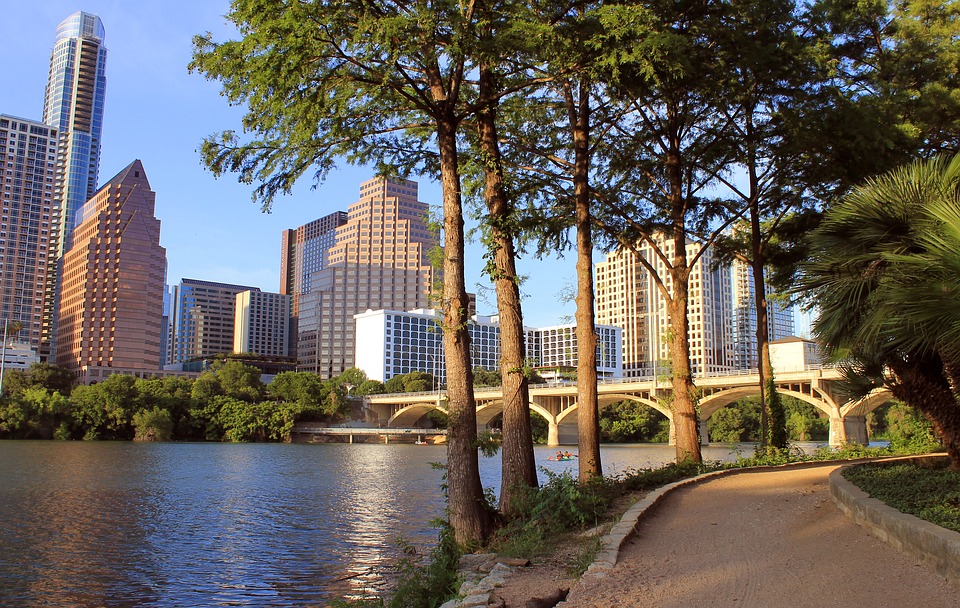
And bikes are certainly welcome—just think “cruiser” and keep your speed down. Summer evenings, if you time your exercise right, you can join the crowds watching the half-a-million Mexican free-tail bats emerge from beneath the Congress Avenue Bridge (call 512.416.5700, ext 3636 for times). The path has multiple access points along Riverside Drive south of the lake and Cesar Chavez Street just to the north.
2. Mountain Biking the Barton Creek Greenbelt
Above Barton Springs stretches a heavily wooded trail that offers some of the state’s best singletrack. The greenbelt runs 7.5 miles one-way from Zilker Park to the lung-busting climb up the Hill of Life, which rises 300 feet over a distance of about a quarter-mile (if you find it too easy, try riding it twice). Though the main stem is fairly flat, there are technical sections of roots and exposed rock that will tighten the fists of even expert riders. Better yet, hook up with locals and discover challenging offshoots like Travis Country. tions.
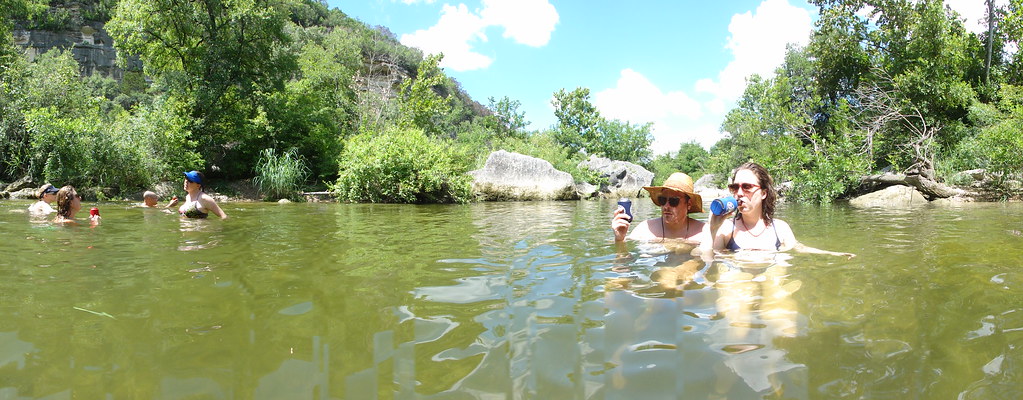
Word to the wise: Due to heavy foot traffic, especially on weekends, the greenbelt is not for hammerheads. Speed demons can avoid the crowded early miles by using the alternate entrance off Highway 360. Austin Parks closes the trail after it rains. Call 512.472.1267 for condi
1. Take a Dip in Barton Springs Pool
When the mercury hits three digits during the scorching Texas summer, there is no more sublime joy than diving into the springs. Located in the heart of Austin at Zilker Park, the three-acre cement-walled pool is fed by four natural springs that bubble up through the aquifer. With the waters kept a cool 68 to 71 degrees throughout the year, it’s no wonder that folks from all walks of life seek to reset their body temps with a quick dip.
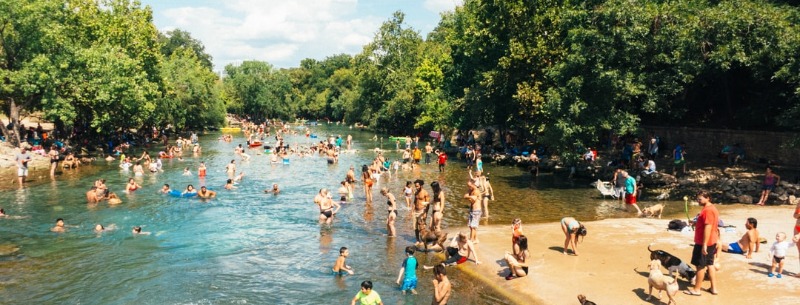
In spring and summer, the nearby grassy banks are popular with picnickers and sunbathers, while local triathletes and hardcore swimmers take laps in the 1,000-foot-long pool on most mornings, regardless of the weather. Fees ($3 per adult, $2 for ages 12 to 17, $1 for children under 12 and seniors over 62) are collected between 9 a.m. and 9 p.m.
